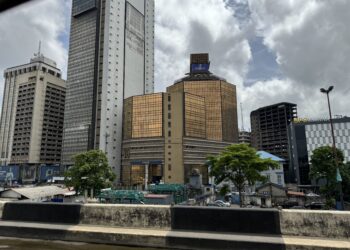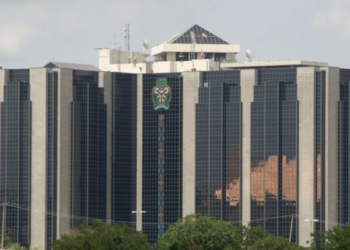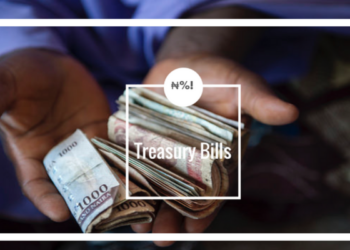The hours leading to the reading of the 244th meeting of the Monetary Policy Committee (MPC) was filled with low expectations across the investor community, as very few expected the MPC to do anything other than retain rates and maintain status quo across board.
However, the CBN Governor and Chairman of the MPC, Godwin Emefiele stunned the financial markets with news that the Monetary Policy Committee had decided to harmonize the CRR on public and private sector deposits at 31% respectively. What this effectively did by my calculation was to immediately free up about NGN 522 billion worth of funds from the CRR net, giving banks some breathing space to be able to put this money to work.
Prior to this MPC, MPR was at 13% with the corridor at +/-200 basis points; private sector CRR was at 20%; with public sector CRR at 75%, with Liquidity Ratio (LR) at 30%; which had the total amount of deposits available to banks at NGN 8.595 trillion; However with the harmonisation at 31%, potentially making the funds available for banks to shoot up to about NGN 9.11 trillion and effectively freeing up over N500billion by my estimates.
Why the harmonisation?
Analysts have called this an easing of sorts, some whilst have called it a move aimed at stimulating the economy, seeing that GDP slowed down in Q1, 2015. Some also believe this move was an attempt to reduce the pressure on banks which have for some months now faced up to serious liquidity challenges. The CBN in its communique however, explained they had apparently reached the limit of tightening when it comes to monetary policy and was now hoping for some complimentary Fiscal and structural policies. It did not provide specifics on those policies. It also opined that the harmonisation of the CRR was imperative to curb abuses and improve the efficacy of monetary policy. Again, it did not explain what those abuses were.
Why Increase CRR in the first place?
Sanusi’s began an increase in Public sector CRR early 2014 in reaction to the gradual depreciation of the exchange rate as well rising inflation at the time. He also was worried about the apparent round tripping of public sector funds by some commercial banks and taking advantage of the arbitrage between government deposits and borrowing.
“We introduced increase in CRR for a number of reasons; first of all you have got liquidity surfeit in the banking industry. As I speak, we have about NGN 1.3 trillion sitting in banks belonging to government agencies. Now the funds are basically there at zero percent interest and the banks are lending about NGN 2 trillion to the government and charging 13, 14%. Now that is a very good business model, is it not? Give me your money for free and I will lend it to you at 14%. Why would I go and lend to anyone? If you want to discourage such perverse behaviour what you need to do is to basically take away some of that money and therefore the Reserve Requirement is supposed to make sure that excess liquidity in the banks’ balance sheets is taken away.”
Government is broke?
The Minister of Finance, Dr. Ngozi Okonjo-Iweala, came out last week to say that the Federal Government had borrowed the sum of N473bn in the past four months to finance this year’s budget, even though the National Assembly had just passed the national budget of NGN 4.493 trillion for the 2015 fiscal.
Investigations have also revealed that the persistent drop in oil prices and low receipts from non-oil sources may have led to a N1.31 trillion shortfall in revenue accruable to the federation in the first three months of this year. Further analysis of the gross federally collectible revenue showed that out of the budgeted revenue of NGN 815 billion expected to be raised in January, the actual receipts from mineral and non-mineral sources was NGN 416.09 billion, representing a decline of NGN 398.91 billion or 48.9%.
For the month of February, the sum of NGN 401.46 billion was generated, indicating a decline of NGN 413.54 billion or 50.7% when compared to the budgeted amount of NGN 815 billion. The lowest amount of generated revenue was recorded in the month of March, which saw the sum of NGN 315.04 billion accruing to the Federation Account. The NGN 315.04 billion generated in March represents a decline of NGN 499.06 billion or 61.34% when compared to the budgeted estimate.
All of these points to something, the FG is nearly broke and the CBN policies are currently in the way of liquidity. It is time to ease up on policy and cut the economy some slack.
Could this be another reason?
If the CBN is reducing Public Sector CRR and increasing Private Sector CRR, then it suggest the government could just be freeing up funds into an already financially strained economy hence the stimulus. Naysayers could even go further by suggesting the harmonisation is perhaps a form of round tripping where government funds held by banks is routed back into the bond and T-bills market providing badly needed liquidity for an already broke government. If that it is indeed the case then its back to where we were early 2014.
Some could argue that the private sector CRR already makes up a huge chunk of bank deposits when compared to public sector funds and so the net effects may not be significant. Even if the government doesn’t borrow back its own money, the extra liquidity that the new CRR might produce could also help reduce bond yields, a crucial factor in the FG’s borrowing capacity.
More than anything though, the government need to borrow regardless of whether it is coming from the private or public sector. Since the Government is yet to be successful at operating a Treasury Single Account, revenues accruing to the government could well pour back into the banks. Cash is fungible, so we won’t be surprised if this happens.
That money you bet will find its way back to the bond market.


















